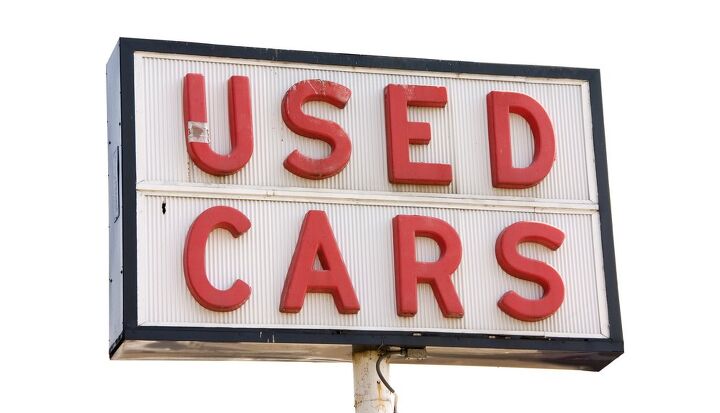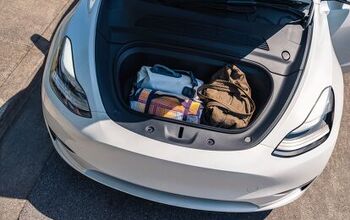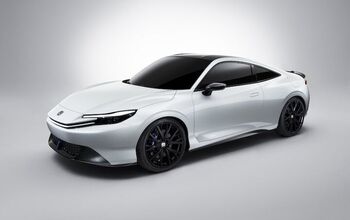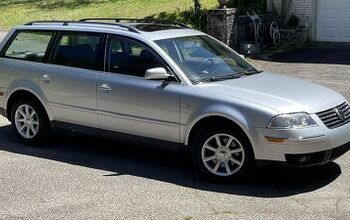Early 2022 Auto Sales Forecasts Are Disheartening

After a tough couple of years, consumers went into 2022 hopeful that unhinged automotive pricing and lean dealer lots would be a thing of the past. However, analysts and industry groups have gone from being cautiously optimistic just a few weeks ago to fairly sullen about the prospects of North American shoppers locating anything that could be considered a square deal.
Goldman Sachs recently issued a report that attempted to encapsulate the whole picture, citing sustained congestion at the ports, pandemic-related factory closures, market inflation, millions of people just dropping out of the workforce, and continued complications stemming from the semiconductor shortage. It estimated that vehicle pricing would fail to go down — and may even pitch up in the first half of 2022 — until all of the above issues have been addressed. But it was hardly the only group chiming in or suggesting that the hard times could last through 2023, as the goalpost for what should be deemed acceptable is moved yet again.
The National Automobile Dealers Association (NADA), representing some 16,000 U.S. automotive retailers, has asserted that supply chain constraints kept dealer inventories down by a whopping 59 percent in December (year over year). But it’s not expecting a rebound, with the association predicting lackluster inventories through at least the second half of this year.
“The coronavirus pandemic and resulting microchip shortage and production cuts significantly constrained new-car and truck inventory at dealerships across the country,” NADA chief economist Patrick Manzi told Bloomberg on Wednesday. “Constraints further led to suppressed new-vehicle sales, as well as used-vehicle inventory shortages and increased vehicle prices.”
From Bloomberg:
The twin crises of the pandemic and the semiconductor shortage have taken a toll on U.S. auto sales, which totaled 14.93 million last year, up 3.1 [percent] from 2020, when lockdowns hit the economy. Prior to the pandemic, the U.S. auto market had a five-year run of sales topping 17 million. The dealer group said inventory is “slowly improving,” but noted the chip shortage cut global auto production by 11.3 million vehicles.
But dealers don’t have much incentive to change the situation because they made an absolute killing last year. Elevated demand and tight supplies made it so dealerships could charge previously unheard-of prices for both new and used vehicles. By the end of 2021, secondhand vehicles were selling for nearly 50 percent more than they were just a year prior. Measured in dollars, that’s made the typical automotive transaction over $7,000 more expensive in just a year’s time.
Granted, wholesale prices also went up and forced showrooms to ask for more money on each vehicle sold. But it wasn’t a matter of breaking even. Large dealerships are currently enjoying record-breaking profitability and it’s largely been at the expense of consumers.
For now, market analysts have issued reassurances that 2022 will see prices falling. But it’s not clear why that will be happening with the same groups claiming it’s to be another year of insanely tight inventories. Edmunds even claimed the last two years will have encouraged those shopping for a new car to order vehicles they want well in advance to ensure they can actually obtain them. Unsurprisingly, you are unlikely to get anything for under MSRP, which the outlet claimed could be viewed as a “good deal, relatively speaking.”
That’s not true, of course. But we’ve been subjected to bad deals for so long that it feels like people have developed a case of Stockholm syndrome. Consider this. In November, Edmunds was reporting that the average monthly payment on a used vehicle had climbed to $520 per month … for 70 months. But I didn’t see a single story about a dealership being held hostage by a disgruntled patron once last year.
If you’re wondering what can be done, you’ve got a lot of company. While the pandemic did stifle production, the global semiconductor industry has clearly shifted away from the low margins offered by the vintage chips that typically go into automobiles to prioritize modern units providing greater profitability. Automakers really should have seen this one coming and started building their own chips prior to 2020. This is especially true of Western manufacturers, since most semiconductor production is based in Asia — making the shortages a little easier for their Eastern counterparts to contend with. However, manufacturers haven’t opted to branch out into building the components necessary to achieve final production. Instead, automakers have been asking the government to lend a hand by funneling money into the chip industry in the hope that they’ll eventually get the chips they need.
But there are other factors. The public’s willingness to entertain these prices and policies is a big reason they’ve persisted for so long. While many are worried that people shunning the market’s high rates will allow the already delicate situation to descend into complete chaos if people stop buying, it’s bound to make cars cheaper and we’ve probably already set ourselves up for a pretty big fall. It’s also already happening — with annual vehicle sales approaching the low numbers endured during the Great Recession. We’re now millions of sales below the typical 17 million averages.
Moving into 2022, NADA anticipates new-vehicle sales of 15.4 million units. This represents an increase of 3.4 percent from 2021 and is fairly close to what’s being estimated by IHS Markit (15.5 million) and a glut of other outlets. But most analysts overestimated last year and just about everyone is convinced that automotive production won’t rebound until late in 2022 or early 2023. That’s roughly the same pitch we got at the start of 2021 — just with everything being pushed another 12 months down the road.
My advice? Get handy with a wrench.
[Image: David Touchtone/Shutterstock]

A staunch consumer advocate tracking industry trends and regulation. Before joining TTAC, Matt spent a decade working for marketing and research firms based in NYC. Clients included several of the world’s largest automakers, global tire brands, and aftermarket part suppliers. Dissatisfied with the corporate world and resentful of having to wear suits everyday, he pivoted to writing about cars. Since then, that man has become an ardent supporter of the right-to-repair movement, been interviewed on the auto industry by national radio broadcasts, driven more rental cars than anyone ever should, participated in amateur rallying events, and received the requisite minimum training as sanctioned by the SCCA. Handy with a wrench, Matt grew up surrounded by Detroit auto workers and managed to get a pizza delivery job before he was legally eligible. He later found himself driving box trucks through Manhattan, guaranteeing future sympathy for actual truckers. He continues to conduct research pertaining to the automotive sector as an independent contractor and has since moved back to his native Michigan, closer to where the cars are born. A contrarian, Matt claims to prefer understeer — stating that front and all-wheel drive vehicles cater best to his driving style.
More by Matt Posky
Latest Car Reviews
Read moreLatest Product Reviews
Read moreRecent Comments
- ToolGuy I might be Batman.
- Lou_BC Well, I'd be impressed if this was in a ZR2. LOL
- Lou_BC This is my shocked face 😲 Hope formatting doesn't fook this up LOL
- Lou_BC Junior? Would that be a Beta Romeo?
- Lou_BC Gotta fix that formatting problem. What a pile of bullsh!t. Are longer posts costing TTAC money? FOOK


































Comments
Join the conversation
Agree the companies choose to outsource. There is little flexibility to adapt to changes in technology especially when it comes to newer generations of microchips.
"Get handy with a wrench." Glad I can, for nearly all repairs. But I'm worried about rust under my 2009 that could force a hard decision. I can't imagine spending $520/mo for 70 months for a *used* car. Ugh.